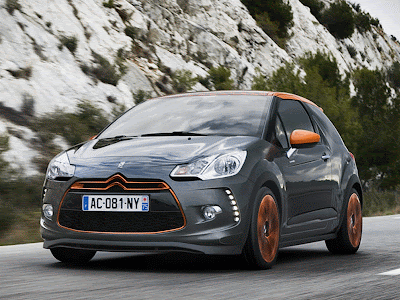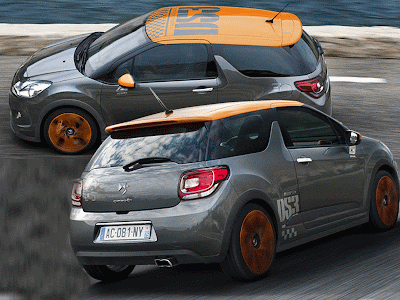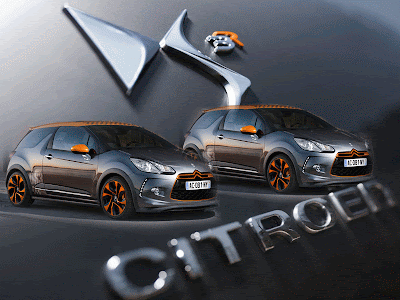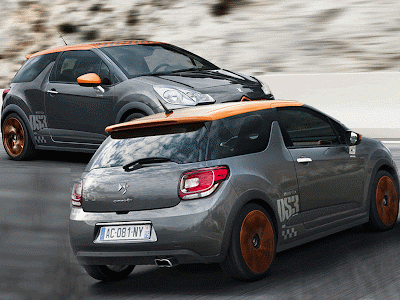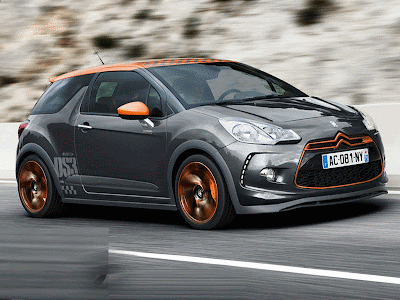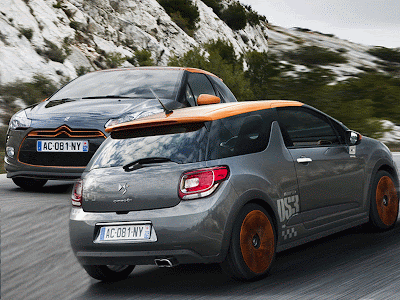Citroen plans to unveil a limited edition of the Citroen DS3 next month at the Geneva Motor Show. The Citroen DS3 Racing is a suped up version of the company's luxe supermini. While only 1000 units will be built, Citroen Australia General Manager, Miles Williams said that local availability for the special DS3 Racing will be announced when the regular DS3 launches in August.
2010 Citroen DS3 Racing Car Limited Edition
“The Citroen DS3 Racing represents an outstanding concentration of behind-the-wheel thrills with an artful blend of performance and efficiency. The DS3 Racing provides a clear indication of what we can expect when the DS3 arrives in Australia in August.” Mr Williams said.
2010 Citroen DS3 Racing Car Limited Edition
Developed by Citroën Racing - the winning team behind five WRC manufacturer's titles and six driver's titles for Sébastien Loeb and Daniel Elena - Citroën DS3 Racing is a special edition with a 100% sporting pedigree. Planned for the second half of 2010, the exclusive Citroën DS3 Racing will be limited to just 1000 production units.
2010 Citroen DS3 Racing Car Limited Edition
As such, the car's output has been bumped up by 30% to 200 PS (147 kW / 197 hp) using the turbocharged 1.6-liter THP engine. Torque is improved by 15% to 275 Nm (203 lb-ft). These changes were achieved by remapping the engine control unit, adjusting the turbo, and adjusting powertrain components.
2010 Citroen DS3 Racing Car Limited Edition
Meanwhile, stiffer suspension springs and new shock absorbers are also installed. The car has been lowered by 15mm, while both the front and rear track were widened by 30mm. Along with the new tires wrapped around the 18-inch wheels, the changes "all dramatically change the driving dynamics," according to a press release.
2010 Citroen DS3 Racing Car Limited Edition
To handle the extra power, the company installed four-piston caliper brakes up front and ventillated discs in back. Carbon-fiber touches are used on the new air diffuser, front bumper, lower body, and wing extensions. Chrome is also used at certain points, like the door handles and exhaust, with orange tint on the calipers, grille, roof, side mirror caps, and wheels. Inside, designers added carbon trim and orange inserts. Purposeful sport seats were also installed.
A Citroën DS3 Racing signature on the rear tailgate and an individually numbered identification plate fixed to the roof-lining further confirm the model's exclusivity.
2010 Citroen DS3 Racing Car Limited Edition
At 3.94-meters long, the grey and orange car will be shown in Geneva with checkered flaq and DS3 Racing graphics. Based on the existing DSport powered by the THP 150, production Citroën DS3 Racing editions will be finished in a special workshop and fitted with a parts kit developed according to Citroën Racing specifications. Only 1000 units of the Citroen DS3 Racing will be produced. The car will be released in the second half of 2010.



